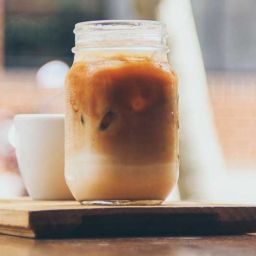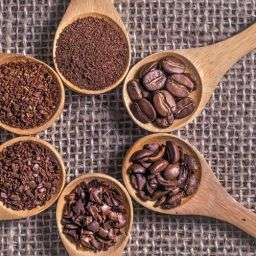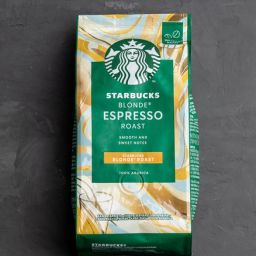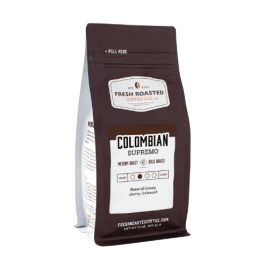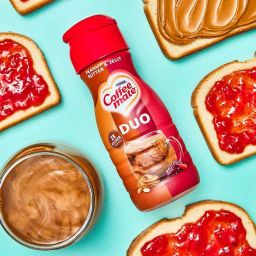
Getting the perfect cup of coffee isn’t just about choosing the right beans or having the fanciest coffee maker—it’s about mastering the basics, particularly the coffee-to-water ratio. This fundamental aspect of brewing controls everything from the strength to the flavor profile of your coffee. Whether you’re a morning brew enthusiast or a casual coffee drinker, understanding how to tweak this ratio can elevate your drip coffee from good to great.
Key Takeaways
- Precision is Key: Accurate measurements lead to consistently better coffee.
- Standard Ratios: Generally, ratios range from 1:15 to 1:18, with many experts recommending a 1:16.67 ratio for a balanced brew.
- Personalize Your Brew: Adjust the ratio based on your taste preference and the specific coffee beans you’re using.
Standard Ratios for Automatic Drip Coffee
The coffee-to-water ratio is arguably the most crucial factor in brewing. A standard that many coffee lovers and baristas swear by is the 1:16.67 ratio—about 60 grams of coffee per 1000 grams of water. This ratio offers a strong yet balanced flavor, suitable for most coffee drinkers. However, if you prefer a stronger or milder flavor, you can adjust the ratio slightly:
- For a stronger coffee, try a 1:15 ratio.
- For a milder taste, a 1:18 ratio might be more to your liking.
Adjusting the Ratio for Taste Preferences
Tweaking the coffee-to-water ratio can dramatically alter the taste of your drip coffee. If you’re aiming for a stronger cup that packs a punch, you might want to lean towards a 1:15 ratio. This lesser amount of water ensures that each sip is robust and flavorful. Conversely, for a lighter, more subtle flavor, a 1:18 ratio could be your go-to, as the additional water dilutes the coffee’s intensity.
For those who like to add cream or sugar, starting with a stronger brew (using a lower ratio like 1:15) is advisable. The extra ingredients tend to mellow out the coffee’s boldness, so beginning with a potent base ensures that your coffee retains its character even after adding cream or sweetener. If you prefer your coffee black, experimenting with ratios from 1:16 to 1:18 might be more appropriate, allowing the nuanced flavors of the coffee to shine through without overwhelming bitterness.
Measurement Techniques for Precision
When it comes to brewing the perfect cup of coffee, precision is crucial. Using a kitchen scale to measure both your coffee and water can make all the difference. This method ensures you’re replicating the same delicious coffee every single morning. Remember, coffee beans and grounds can vary significantly in size and density, which can throw off volumetric measurements like scoops or tablespoons.
Cup sizes can also add a layer of complexity. A standard cup in the U.S. holds about 8 ounces of liquid, but coffee-specific measurements often use a 6-ounce cup. This discrepancy can affect how much coffee you’re actually brewing. If you’re using international standards or coffee makers from different countries, be mindful that their “cup” sizes might differ, influencing the amount of water you should use.
Tools for Perfect Drip Coffee
To brew the perfect cup of drip coffee, a few essential tools can make a significant difference. First, a digital scale is indispensable for ensuring you use the exact amount of coffee and water every time. Precision in measurements leads to consistency in taste. Next, a good grinder is crucial. Grinding your beans just before brewing ensures they’re as fresh as possible, which enhances the coffee’s flavor and aroma. Choose a burr grinder for a consistent grind size.
Lastly, the right coffee maker matters. Look for models that offer stable water temperature control and even water distribution over the coffee grounds. These features help extract the most flavor from your beans and avoid over or under-extraction.
The Impact of Coffee Bean Type and Roast
The type of coffee bean and its roast level significantly impact the flavor of your drip coffee. Arabica beans are prized for their smooth, complex flavor profiles, often with hints of fruit and sugar. They tend to have higher acidity compared to Robusta beans, which are typically stronger and more bitter, with a heavier body and less acidity.
When it comes to roasts, light roasts preserve more of the bean’s original flavor, making them ideal for tasting the unique characteristics of the coffee’s origin. Medium roasts offer a more balanced flavor, acidity, and aroma, making them a versatile choice for many coffee drinkers. Dark roasts provide a bold, smoky flavor that many associate with classic coffee bitterness.
Common Mistakes and How to Avoid Them
Two of the most common issues in brewing coffee are over-extraction and under-extraction. Over-extraction occurs when coffee grounds are in contact with water for too long or the water is too hot, resulting in a bitter, harsh flavor. To avoid this, ensure your brewing time and water temperature are within recommended guidelines—generally around 195°F to 205°F for most machines.
Under-extraction happens when the coffee doesn’t interact with water long enough, leading to a weak, sour cup. This can be corrected by adjusting your grind to be finer, which increases the surface area exposed to water, or by slightly increasing the brew time.
FAQs
How do I adjust the coffee ratio for different serving sizes? To adjust for different serving sizes without sacrificing flavor, scale up or down your coffee and water proportionally. For instance, if your ratio is 1:16 for one cup, maintain that ratio regardless of how many cups you’re making.
Does the quality of water affect my coffee? Absolutely! Water quality can significantly influence the taste of your coffee. Soft water typically results in better flavor extraction than hard water. If possible, use filtered or bottled water to ensure a cleaner, purer taste.
Final Thoughts
Recall that the coffee-to-water ratio is vital for crafting the perfect brew. While a 1:16 ratio is a common starting point, personal preference plays a crucial role. Don’t hesitate to adjust this ratio based on your taste or the specific beans and roast you’re using.
Precision in measurement cannot be overstated—using a scale to measure your coffee and water can significantly enhance your brewing consistency. Remember, different beans and roasts might require slight adjustments to your standard ratio.




